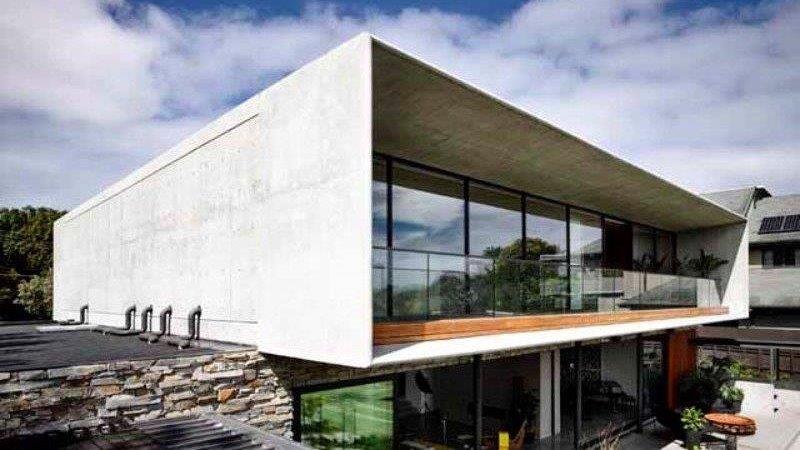“As the design developed, we were keen to avoid a monolithic, heavy first floor,” Matt says.
“Instead we wanted to express the material in a unique way that enabled a more sculpted and less conventional concrete presence.
“We think the tapering of the edges has been successful in helping to provide an expression that almost belies the nature of the material and renders the first floor as light and nimble, soft and tactile.”
In terms of construction, the first floor and roof slabs were cast in situ, the side walls precast off-site, and the tapered ends cast on-site. The roof is a minimally pitched concrete slab with a waterproof membrane, finished in metal roof cladding.
